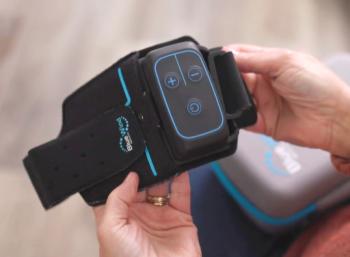
Unlocking Hope: overcoming the behavioral crisis in children and adolescents through digital transformation
Primary care physicians are in position to connect young patients to appropriate mental health resources. Here’s what you need to know.
Behavioral issues have long been underrecognized, underappreciated, and often stigmatized. Behavioral health challenges in children are now approaching a crisis level, having become particularly acute as COVID-19 disrupted children’s social and educational experiences outside their homes.
Limited
One way of overcoming such barriers to care is harnessing overlooked avenues for accessing mental and behavioral health, in particular
No wrong door to care
There is no “wrong door" to access mental health resources. It is important that access and treatment for mental and behavioral health care is available at any point of entry across the care continuum, including prevention and wellness, screening and early detection, intervention, and post-discharge and access to ongoing care. This comes with the responsibility to make sure effective infrastructure is in place to ensure that those with mental and behavioral health needs will be identified, assessed, and have access to treatment, either directly or through appropriate referrals, no matter where they enter across the realm of services.
One key to successful and sustainable behavioral health integration in primary care is
Prevention and wellness
Effective prevention and wellness strategies require a combination of clinical, social, community, and policy leaders working together to destigmatize conversations around mental and behavioral health. It’s essential to educate community members on how to promote healthy habits and fund initiatives that address the underlying drivers of mental and behavioral health conditions. Both health care organizations and community leaders play a significant role in this part of the continuum.
Opportunities in this space include implementing appropriate social and emotional learning standards and programs, supporting professional development for educators, and providing funding for teachers and school leaders to work with families to support student health needs. Digital solutions can be used to enable these activities, such as applications being used to provide clinically validated, on-demand, self-directed educational resources about mental health and wellness.
Screening and early detection
Approximately
Effective screening using standardized tools, including the PHQ-2 and PHQ-9 for depression and the GAD-7 for anxiety, in a variety of care settings will better ensure that patients are evaluated at an early point in their care. This will ensure that the stages of their behavioral health care that follow – assessment, diagnosis, treatment, and ongoing monitoring – will be
Primary care physicians can use screenings to account for the diverse ways in which mental health challenges can manifest, such as changes in physical health, sleep patterns and other behaviors. This shifts the focus from a reactive, wait-to-fail model to a proactive system in which needs are identified early and interventions are delivered efficiently to the appropriate level of need required.
Intervention
Providing timely access to appropriate mental and behavioral health care is a universal challenge. Only about 11% of children aged 3 to 17 years received mental health care prior to COVID-19, and
Placing mental and behavioral health care in pediatrician’s offices and other settings of care, either physically or through digital modalities, enables more efficient behavioral health care delivery. This comprehensive co-location of services allows for more timely consults, patient triaging, comprehensive care management at the point of care, and transitional care and referral without the stigma associated with seeking care for behavioral health conditions.
In addition to integrating physical and behavioral health resources through the physical co-location of services, integration can also be supported through digital solutions. For example, behavioral health integration can be enabled by digital tools that conduct closed-loop referrals to streamline referrals to behavioral health services and resources, creating additional operational value and efficiency. These digital solutions contribute to improved care navigation across intervention resources, allowing individuals to seamlessly navigate to a variety of convenient behavioral health resources that fulfill their need for that care. Typically, the success of these digital referral solutions depends on the network of organizations on the platform, as well as whether the patient/family can easily navigate to the appropriate resources once the referral has been made.
Post discharge & access to ongoing care
Effective follow-up and access to ongoing care post-discharge are critical to improving health outcomes, reducing readmissions, and
Strategies to improve post-discharge compliance and overall access to ongoing mental and behavioral health care include effective patient engagement tools such as medication adherence, peer network tools, and remote patient monitoring (RPM). RPM may serve as an extension of the care team by allowing individuals to share biometric and other data (e.g. mobile app-based, test-based, etc.)from a nonclinical setting with their care team as a part of a provider-supported program of care. Ultimately, this RPM model strives to evaluate patients more frequently and facilitates greater opportunities for the patient and family to share information with their health care team, thereby detecting developing mental and behavioral health problems earlier than would be possible through scheduled clinical visits.
Uniting behind behavioral health
Addressing this crisis will require an all-of-society effort, one that spans policy, individual, and institutional changes on how we view and prioritize behavioral health – and digital solutions have a vital role to play, both as a locus of care and as powerful enablers of the changes to both access and availability of care.
The good news: We are heading in the right direction, and new legislation is pushing for mental health services to be
Scott Cullen, MD, is executive vice president of strategic innovation and chief clinical officer for
Ontara Sarker, a behavioral health expert, leads
Newsletter
Stay informed and empowered with Medical Economics enewsletter, delivering expert insights, financial strategies, practice management tips and technology trends — tailored for today’s physicians.














